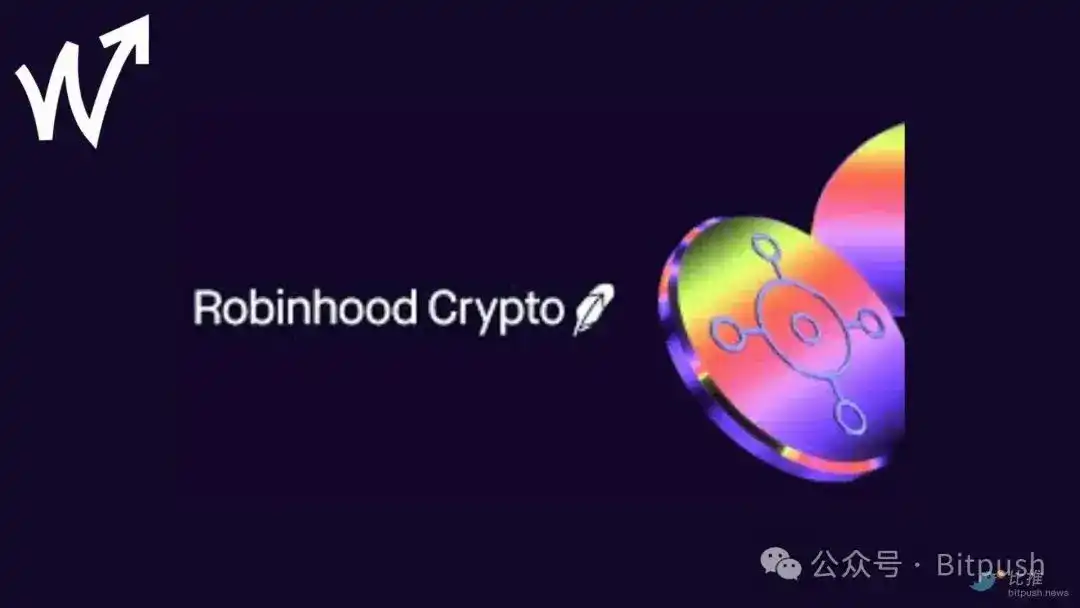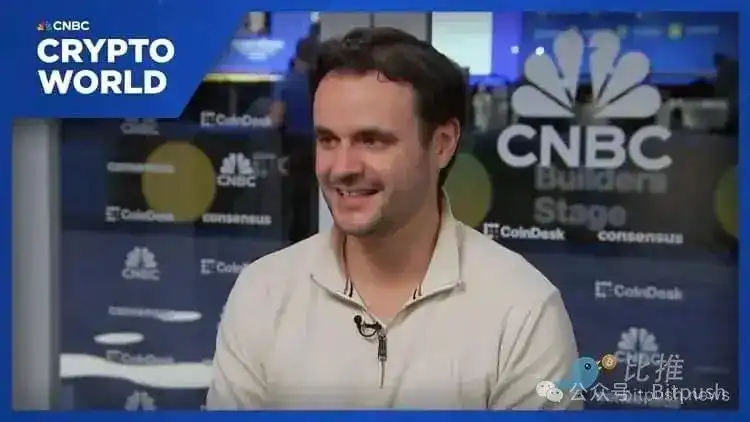Original Title: "15 Years Ago in Cannes, He Flipped Burgers; Now He Steers Robinhood's Global Crypto Expansion"
Original Source: BitPush
Fifteen years ago, in a small apartment near the French Riviera, 21-year-old Johann Kerbrat worked at McDonald's during the day and taught himself programming at night. Now, as the Senior Vice President and Head of Crypto at Robinhood, he returns to his roots with the company's most ambitious crypto product suite.
Cannes "Memories"
"My studio back then was probably smaller than your bathroom," Kerbrat recalled. Before enrolling at the University of Nice, he quit his job to start his first fintech startup—a no-code payment company that helped small merchants build e-commerce websites without hiring developers.
"That was the early stage of e-commerce. Merchants either spent tens of thousands of euros hiring agencies or couldn't operate online at all. Our idea was to allow people to set up their own stores without technical knowledge—kind of like today's Shopify." The timing was perfect. In the early 2010s, online commerce was booming, and Kerbrat's tools gave small businesses a chance to compete. It also made him realize how fragile and expensive the global financial system was.
Enlightenment: The Bitcoin Whitepaper
Kerbrat later recalled that a conversation with a Greek classmate made him aware of the "fragility" of the traditional banking system. That classmate told him that his family's bank account had been frozen during the Eurozone crisis, causing their lives to come to a standstill. Meanwhile, merchants on his platform were constantly providing feedback: high fees, complicated refund processes, and credit card fraud became uncontrollable sunk costs.
"Then I read the Bitcoin whitepaper," he said, "and I thought, 'Okay, this is the solution to all the problems.'"
That was in 2010. Kerbrat began assembling mining rigs, deploying wallets, and trying to build a Bitcoin-based payment interface. He didn't get rich overnight with Bitcoin, nor did he choose to be a speculator; instead, he sought to understand the real potential behind the technology. "At that stage, you realize that cryptocurrency is not just an asset, but a structural transformation."
Leading Robinhood's "Bet" on Crypto
Later, he moved on to Airbnb and Uber, becoming one of the core engineers of the platforms. Before joining Robinhood, he served as the VP of Engineering at Iron Fish (a privacy Layer 1 blockchain project), focusing on privacy technologies like zero-knowledge proofs. This experience brought him back to the crypto space and made him realize that "user experience" was the biggest shortcoming in the crypto industry.
In 2021, he officially joined Robinhood Crypto as Chief Technology Officer and was promoted to Senior Vice President and General Manager in 2023. By this time, it had been a full 13 years since he first opened the Bitcoin whitepaper.

Under Kerbrat's leadership, Robinhood Crypto has launched several important products:
In 2022, Robinhood Wallet was launched. This is a non-custodial wallet, similar to MetaMask, but with a simpler interface aimed at beginner users. He described it as "a Web3 browser built for ordinary people."
Starting in 2023, it began supporting Bitcoin transfers and on-chain asset withdrawals, marking Robinhood's transition from a "trading interface" to "crypto infrastructure."
In 2024, he led Robinhood's acquisition of the European crypto trading platform Bitstamp, attempting to leverage Bitstamp's 50+ licenses to enter the European market.
In his view, this was an inevitable choice given the unclear regulatory environment in the U.S.: "We can't bet the future on the possibility that the SEC will relax regulations." He emphasized, "Compliance is not a barrier, but a market barrier." This is also key to Robinhood's ability to establish a foothold in the crypto business.
A Glamorous "Return"
Now, on the Cannes coastline, in the same area where he once lived and worked night shifts at fast food, Kerbrat finds himself in a Belle Époque mansion called "Château de la Croix des Gardes," participating in the launch of Robinhood's most ambitious crypto product suite in history.

On Monday, the company announced it would expand the issuance of tokenized U.S. stocks and ETFs in Europe, launch cryptocurrency staking services in the U.S., offer perpetual futures for eligible EU traders, and introduce a new Layer 2 blockchain optimized for real-world asset settlement and round-the-clock trading.
"This is absolutely surreal," Kerbrat said while sitting in the iconic Carlton Hotel, a five-star landmark that once felt out of reach for him. "When I was younger, I often walked past here—I never thought I would live here."
Robinhood's New Layout
This launch coincides with the first Ethereum Community Conference held in Cannes and Robinhood's recent regulatory approvals in Europe. Robinhood's latest move is its most serious attempt to date to merge traditional finance with blockchain-based infrastructure. Following the announcement, Robinhood's stock hit an all-time high, with a year-to-date increase of over 100%.
Kerbrat stated that their goal is not to showcase features but to make crypto technology "invisible" in the background, likening it to "pipes." "You don't think about how the water flows to your faucet," he said, "you just expect it to turn on and work."

But there are still "pipes" to be built.
The core of Monday's announcement is the tokenization of U.S. stocks and ETFs, which is now open to users in 30 EU and EEA countries. These tokens are initially built on Arbitrum, providing trading access five days a week, 24 hours a day, supporting dividend payments, and Robinhood does not charge commissions or spreads. Eventually, they will migrate to a custom Layer 2 blockchain that will support tokenized assets, seamless bridging, and self-custody.
In the U.S., Robinhood is launching staking services for Ethereum and Solana, allowing users to earn rewards by supporting network operations. In Europe, cryptocurrency perpetual futures will offer eligible users up to 3x leverage, routed through Bitstamp. Other upgrades include smart trading platform routing, tax lot management, and advanced charting tools—all designed to make cryptocurrency trading as seamless and intuitive as stock trading.
"When we talk about mass adoption," Johann Kerbrat said, "this is what it looks like. A product that people use—without needing to understand how it works."
For Johann Kerbrat, who spent his teenage years in Cannes and Nice, this return is not just symbolic. It marks how far he has come—and how much still feels the same as before.
His father worked in IT, and his mother stayed home to care for him and his sister. One day, his father brought home a bulky old Apple computer with a black-and-white screen, which was the starting point of the "spark." At the age of 7, he began to tinker with computers. By 11, he was regularly writing code. By 17, he had started trying to fix the flaws he saw in the internet economy.
Kerbrat's parents specifically came to watch the launch event. He said they still remember those early days—the small apartment, the first line of code, and the endless conversations with merchants who were skeptical about him—anyone could build an e-commerce website without knowing how to code.
"We chose Cannes because of the license approvals and the conference being here," Kerbrat said, "but I won't pretend it doesn't feel good." He paused for a moment, gathering his thoughts, "I never thought I would come back in this way."
Note: The information in this article is compiled from sources including CNBC, the Unchained podcast, and Robinhood Investor Relations' official website.
免责声明:本文章仅代表作者个人观点,不代表本平台的立场和观点。本文章仅供信息分享,不构成对任何人的任何投资建议。用户与作者之间的任何争议,与本平台无关。如网页中刊载的文章或图片涉及侵权,请提供相关的权利证明和身份证明发送邮件到support@aicoin.com,本平台相关工作人员将会进行核查。




